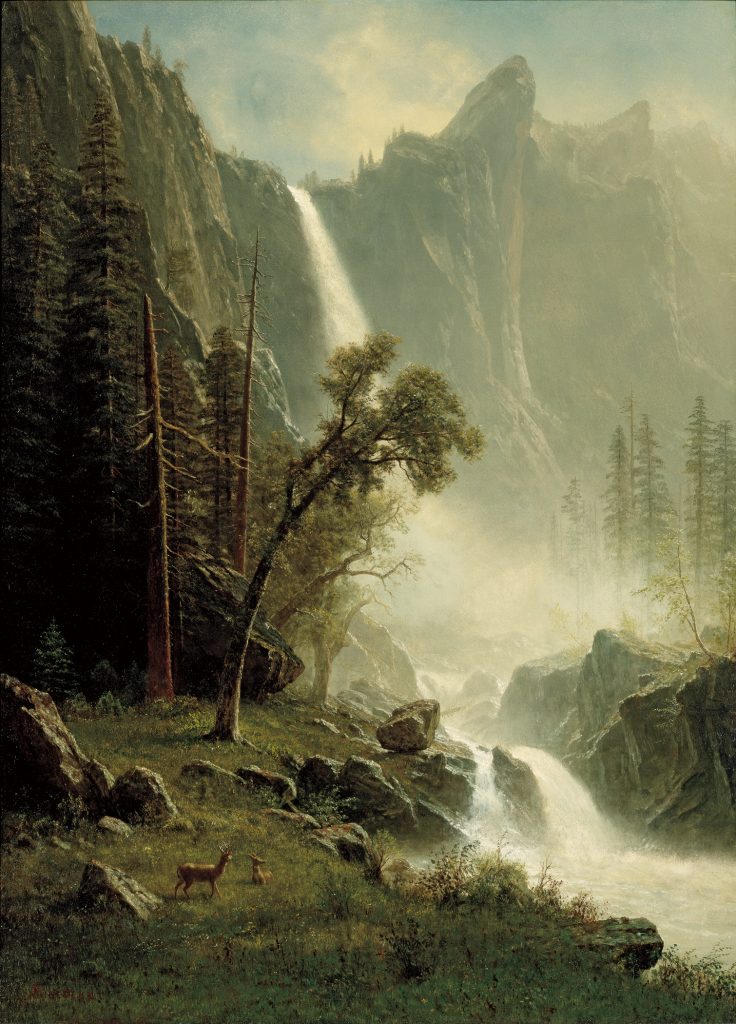Bridal Veil Falls, Yosemite (work of art)
Información sobre la obra de arte
Key Ideas
- The setting for this painting was originally part of the territory of the Ahwahnechee, a Native American tribe that lived in the Yosemite Valley for thousands of years.
- After gold was discovered in the Yosemite Valley, the state government of California allowed militia troops to force away and kill the Ahwahnechee people who lived there.
- Landscape paintings like this one promoted environmental protection and land preservation in Yosemite. These types of paintings also romanticized peaceful wilderness scenes of land that had been forcefully taken from Native Americans.
- Albert Bierstadt is best known for his landscape paintings of the American West. He made oil sketches of the scenery during his visits to the Yosemite Valley. He later used the sketches as a reference for his paintings.
Más información
This painting depicts a waterfall in California’s Yosemite Valley. The waterfall’s official name is Bridalveil Fall. Its name comes from its resemblance to a bride’s wedding veil. The Ahwahnechee people called the waterfall Pohono, meaning “Spirit of the Puffing Wind.” This Native American tribe lived in the Yosemite Valley for thousands of years. Some Ahwahnechee people still live in the surrounding area.
Settlers discovered gold in the Yosemite Valley in the late 1840s, and state military troops began violently forcing the Ahwahnechee to leave their homeland. The troops murdered many of the Ahwahnechee people. They burned their villages and stole their food and supplies. Approximately 12 years later, Albert Bierstadt traveled to the Yosemite Valley and saw Bridalveil Fall for the first time. He referred to it as the “Garden of Eden.” This painting was based on oil sketches he made during one of his visits.
Bierstadt was an American artist who was born in Germany. He became famous for painting landscapes of the American West. His landscape paintings promoted the preservation of Yosemite as public parkland. His work also raised awareness of the need to protect the land and America’s natural beauty. While this painting portrays a peaceful scene, the land that it depicts was the site of a state government-approved massacre of Indigenous peoples.
additional search keywords: weather
Recursos adicionales
Recursos para los profesores
- Read an article about Bierstadt.
- Explore an exhibition focused on Bierstadt (watch the exhibition videos).
- Read an article about the removal of Native Americans from Yosemite Valley.
Recursos para los estudiantes
- View Bierstadt’s famous painting of the Rocky Mountains.
- Watch a video about Bierstadt.
- Explore an interactive map of the land of Native peoples.

